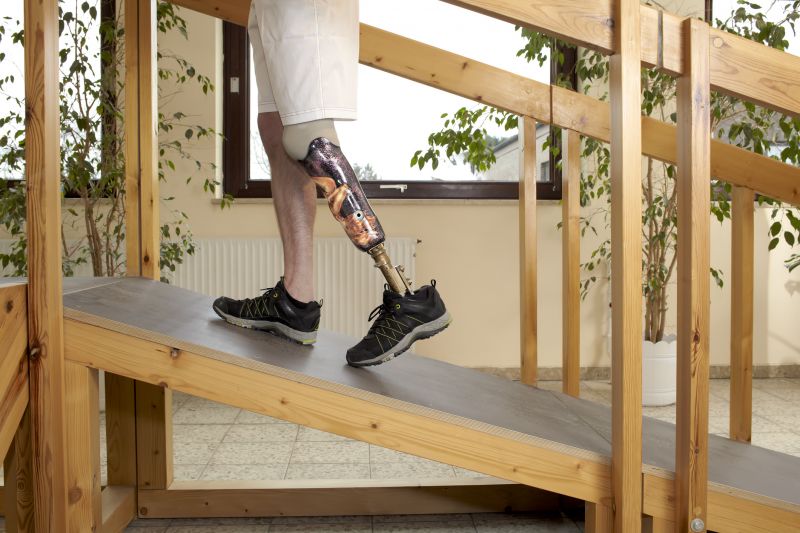Leading-Edge Products For Handicap Ramp Installations For Seamless Access
Explore innovative products that enhance safety, durability, and ease of installation for handicap ramps.
 Creating accessible environments for individuals with mobility challenges involves selecting the right products for handicap ramp installations. Properly designed ramps ensure safety, ease of use, and compliance with accessibility standards. When considering ramp installations, it is essential to evaluate the variety of products available, their durability, and compatibility with different environments. From residential to commercial settings, a wide range of equipment and accessories can enhance the functionality and safety of a handicap ramp.
Creating accessible environments for individuals with mobility challenges involves selecting the right products for handicap ramp installations. Properly designed ramps ensure safety, ease of use, and compliance with accessibility standards. When considering ramp installations, it is essential to evaluate the variety of products available, their durability, and compatibility with different environments. From residential to commercial settings, a wide range of equipment and accessories can enhance the functionality and safety of a handicap ramp.
Top Overall Option
Modular Aluminum Ramp System
A modular aluminum ramp system offers a versatile and durable solution for various installation needs. Its lightweight construction facilitates easy transport and assembly, while the corrosion-resistant material ensures longevity in different weather conditions. Designed with safety features such as non-slip surfaces and customizable lengths, this type of ramp can adapt to diverse environments and user requirements.
Types of Products For Handicap Ramp Installations
Aluminum Portable Ramps
Lightweight and easy to transport, portable ramps are suitable for temporary or adjustable access needs.
Foldable Ramps
Designed for compact storage and portability, foldable ramps are ideal for travel or occasional use.
Threshold Ramps
Low-profile ramps that bridge small height differences at doorways and thresholds.
Permanent Aluminum Ramps
Built for long-term installation, these ramps provide stable and durable access solutions.
Steel Ramps
Heavy-duty ramps suitable for industrial or high-traffic environments requiring extra strength.
Rubberized Ramps
Offering enhanced grip and shock absorption, rubberized ramps are useful in various settings.
Custom Modular Ramps
Flexible systems that can be tailored to specific dimensions and configurations for unique spaces.
Wheelchair Lift Platforms
Elevating platforms provide an alternative to ramps, suitable for multi-level access needs.
Handrail Accessories
Complementary handrails enhance safety and support along ramp pathways.
Edge and Safety Barriers
Protective barriers prevent accidental falls and define ramp boundaries clearly.
Non-slip Surface Coatings
Applied to ramp surfaces to improve traction and reduce slipping hazards.
Adjustable Ramp Systems
Ramps with adjustable height and length features to accommodate changing needs.
Threshold Ramp Pads
Portable pads designed to level door thresholds and small elevation changes.
Surface Mount Ramps
Ramps that are fixed directly onto surfaces for added stability and permanence.
Slope Adjustment Kits
Components that help modify the incline of existing ramps for compliance and safety.
Weather-Resistant Ramp Coatings
Protective coatings that extend the lifespan of ramps exposed to outdoor elements.
Popular Choices
Widely used for their lightweight design and ease of setup, suitable for various temporary needs.
Favored for their compact foldability and convenience during travel or storage.
Commonly selected for bridging small height differences at doorways efficiently.
Popular for their customizable length and durability in various environments.
Increasingly used in multi-level access solutions where ramps are impractical.
A common feature to enhance safety on outdoor and indoor ramps.
Frequently added for additional support and safety along ramp pathways.
Trending for their flexibility in meeting changing accessibility requirements.
Chosen for their stability and permanence in outdoor installations.
Popular for outdoor ramps to withstand environmental exposure and prolong usability.
Commonly added to prevent falls and define ramp edges clearly.
Chosen for their strength in industrial or high-traffic environments.
Durability and stability are critical factors in choosing products for ramp installations. Materials such as aluminum, steel, and heavy-duty plastics are commonly used to withstand various weather conditions and frequent use. Additionally, modular systems allow for customization and scalability, making it easier to adapt to different spaces and user needs. Accessories like handrails, non-slip surfaces, and edge protection further improve safety and usability.
Installation ease is another important consideration. Many products are designed for straightforward setup, often requiring minimal tools and expertise. This can be particularly beneficial for residential installations or for maintenance purposes. Moreover, selecting products that are low-maintenance and resistant to corrosion can extend the lifespan of the ramp system, ensuring long-term accessibility solutions. Proper planning and product selection are vital steps toward creating inclusive and functional environments.
Key Buying Considerations
- Assess the weight capacity required to ensure safety and suitability for the user.
- Determine the appropriate ramp length and slope to comply with accessibility standards.
- Choose durable materials that can withstand environmental conditions if installed outdoors.
- Consider portability features if the ramp needs to be moved frequently or transported.
- Evaluate safety features such as non-slip surfaces, edge protection, and handrails.
- Check installation requirements and whether professional setup is necessary or if DIY is feasible.
- Look for modular or adjustable options to accommodate changing needs or space constraints.
- Ensure the ramp design complies with local accessibility regulations and standards.
- Consider maintenance needs and select low-maintenance materials for long-term use.
- Review weight and size for storage and transportation convenience.
- Examine compatibility with existing structures, including thresholds and doorways.
- Prioritize safety features like anti-slip coatings and secure fastening mechanisms.
- Estimate budget constraints while balancing quality and durability.
- Identify whether additional accessories like safety barriers or lighting are needed.
- Review customer feedback and product specifications for insights into usability and longevity.
